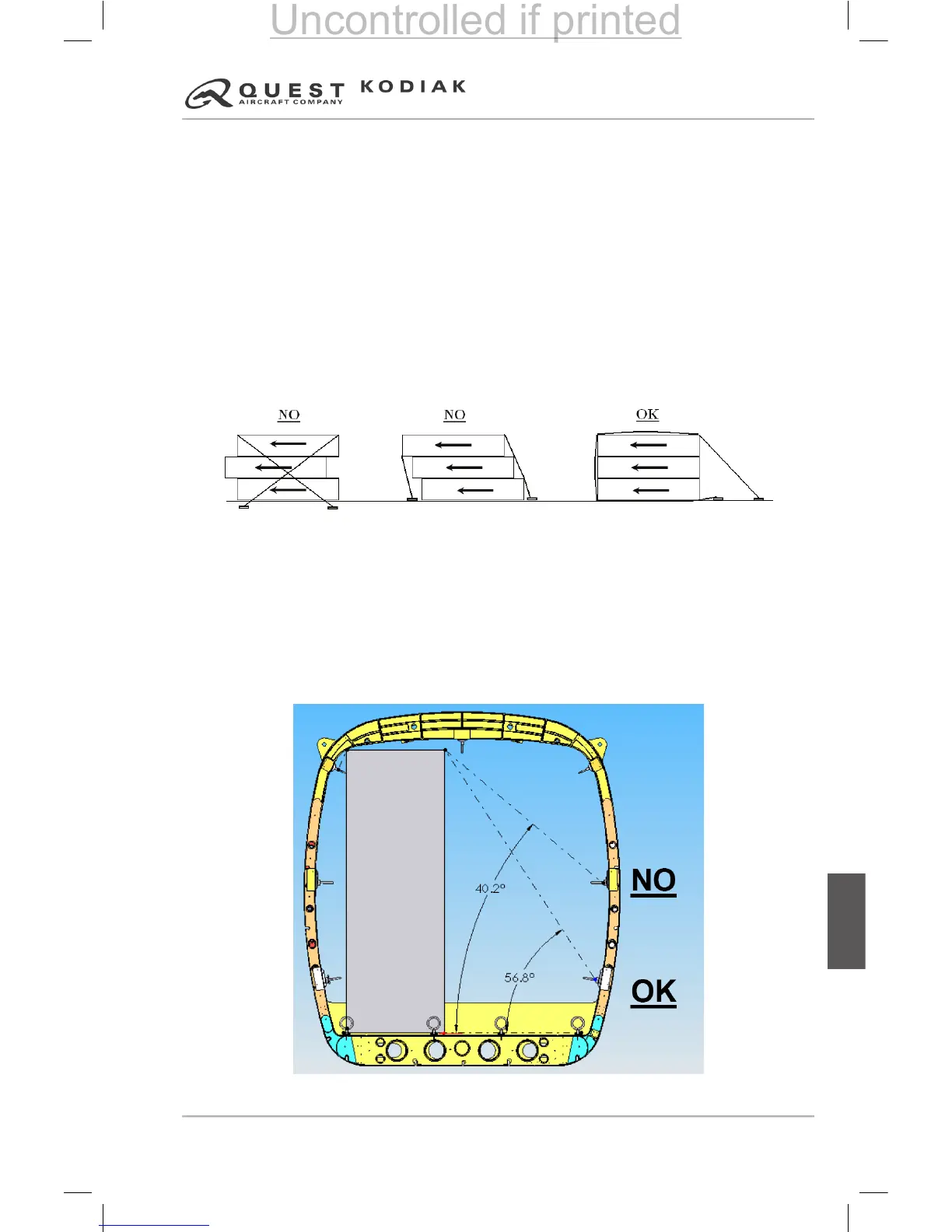• Only one strap may be attached to each cargo tie-down tting.
• Fittings installed in the seat tracks must be spaced at least 8" apart.
• There must be at least 4″ of clearance between the sides of the fuselage
(or windows) and articles of cargo.
• There must be at least 8″ of clearance between cargo and seat backs.
• Cargo spanning more than one zone may have a total weight of the
added zones, but care must be taken to ensure that the maximum zone
ratings are not violated in any individual zone.
• Items that are difcult to bundle or stack with other cargo must be
secured separately using adequate straps and tie-down points.
• All equipment used to secure cargo must be in proper condition to
perform its function, with no damage or weakened components that
could adversely affect its performance.
Figure 7-53 – Securing Stacked Cargo
Using Wall and Ceiling Tie-Downs to Secure Cargo
The walls and ceiling of the fuselage are less capable of restraining cargo
than the seat tracks, and therefore require the following considerations:
• When securing cargo to prevent upward movement, the cargo must
be positioned so that the straps create an angle of at least 45° with the
oor (viewed from front or rear) when using tie-down points in the walls
of the fuselage. This is illustrated in the gure below.
Figure 7-54 – Upward Restraint with Straps
